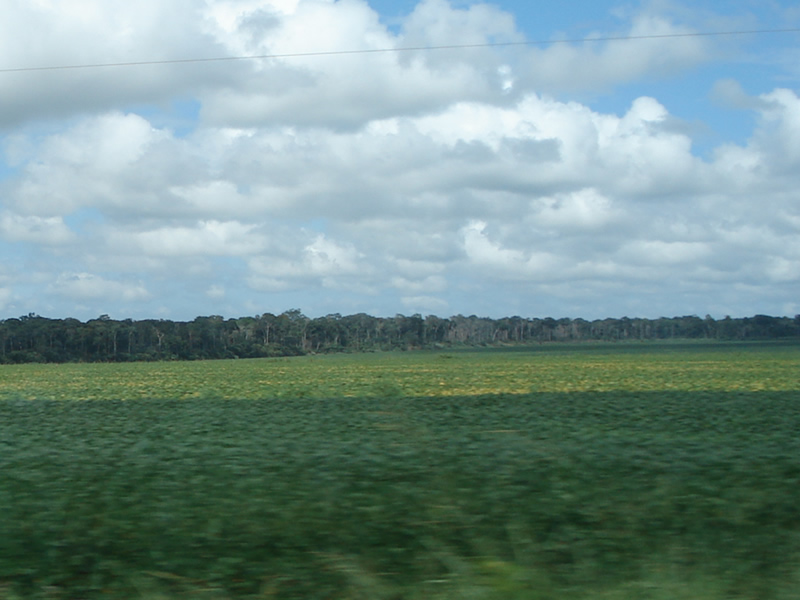|
Corumbiara Massacre
The Slaughter of Corumbiara was a violent conflict that occurred on August 9, 1995, in the municipality of Corumbiara, located in the state of Rondônia, Brazil Brazil, officially the Federative Republic of Brazil, is the largest country in South America. It is the world's List of countries and dependencies by area, fifth-largest country by area and the List of countries and dependencies by population .... The conflict erupted when police forces, alongside armed gunmen recruited from local farms, attacked a group of landless workers who were occupying an area of unproductive land. The violence resulted in the deaths of 12 people, including a nine-year-old child and two policemen. Amnesty International. August 10, 1995. Background In the early ...[...More Info...] [...Related Items...] OR: [Wikipedia] [Google] [Baidu] |
Corumbiara
Corumbiara is a municipality located in the Brazilian state of Rondônia Rondônia () is one of the 26 states of Brazil, located in the northern subdivision of the country (central-western part). It is bordered by Acre (state), Acre in the west, Amazonas, Brazil, Amazonas in the north, Mato Grosso in the east, and Bo .... Its population in 2020 was 7,220 and its area is 3,060 km². IBGE /ref> It was the site of the Corumbiara massacre. See also * List of municipalities in Rondônia References Municipalities in Rondônia {{Rondônia-geo-stub ... [...More Info...] [...Related Items...] OR: [Wikipedia] [Google] [Baidu] |
Rondônia
Rondônia () is one of the 26 states of Brazil, located in the northern subdivision of the country (central-western part). It is bordered by Acre (state), Acre in the west, Amazonas, Brazil, Amazonas in the north, Mato Grosso in the east, and Bolivia in the south. Rondônia has a population of 1,815,000 as of 2021. It is the fifth least populated state. Its capital and largest city is Porto Velho, bathed by the Madeira River. The state was named after Cândido Rondon, who explored the north of the country during the 1910s. The state, which is home to c. 0.7% of the Brazilian population, is responsible for c. 0.3% of the Brazilian GDP. The state has 52 municipalities and occupies an area of 237,590.547 Square kilometre, km2, equivalent to the territory of Romania and almost five times larger than Croatia. In addition to this, there are other important cities such as Ariquemes, Cacoal, Guajará-Mirim, Ji-Paraná, Rolim de Moura and Vilhena. Geography Rondonia used to be home to ... [...More Info...] [...Related Items...] OR: [Wikipedia] [Google] [Baidu] |
Brazil
Brazil, officially the Federative Republic of Brazil, is the largest country in South America. It is the world's List of countries and dependencies by area, fifth-largest country by area and the List of countries and dependencies by population, seventh-largest by population, with over 212 million people. The country is a federation composed of 26 Federative units of Brazil, states and a Federal District (Brazil), Federal District, which hosts the capital, Brasília. List of cities in Brazil by population, Its most populous city is São Paulo, followed by Rio de Janeiro. Brazil has the most Portuguese-speaking countries, Portuguese speakers in the world and is the only country in the Americas where Portuguese language, Portuguese is an Portuguese-speaking world, official language. Bounded by the Atlantic Ocean on the east, Brazil has a Coastline of Brazil, coastline of . Covering roughly half of South America's land area, it Borders of Brazil, borders all other countries and ter ... [...More Info...] [...Related Items...] OR: [Wikipedia] [Google] [Baidu] |
Movimento Dos Trabalhadores Rurais Sem Terra
The Landless Workers' Movement (, MST) is a social movement in Brazil aimed at land reform. Inspired by Marxism, it is the largest such movement in Latin America, with an estimated informal membership of 1.5 million across 23 of Brazil's 26 states. MST defines its goals as access to the land for poor workers through land reform in Brazil, and activism around social issues that make land ownership more difficult to achieve, such as unequal income distribution, racism, sexism, and media monopolies. MST strives to achieve a self-sustainable way of life for the rural poor. The MST differs from previous land reform movements in its single-issue focus; land reform for them is a self-justifying cause. The organization maintains that it is legally justified in occupying unproductive land, pointing to the most recent Constitution of Brazil (1988), which contains a passage saying that land must fulfill a social function (Article 5, XXIII). The MST also notes, based on 1996 census statis ... [...More Info...] [...Related Items...] OR: [Wikipedia] [Google] [Baidu] |
